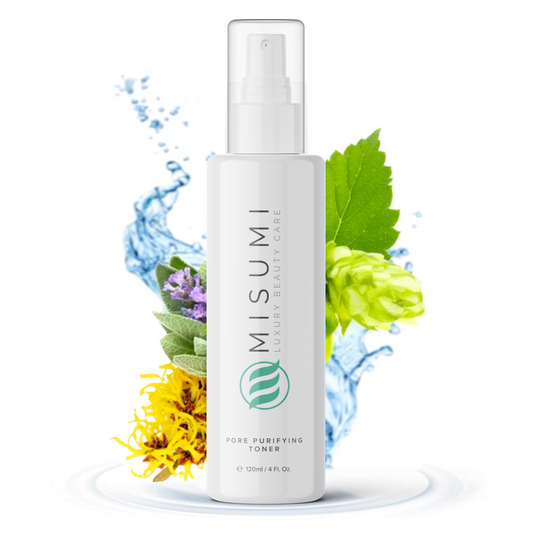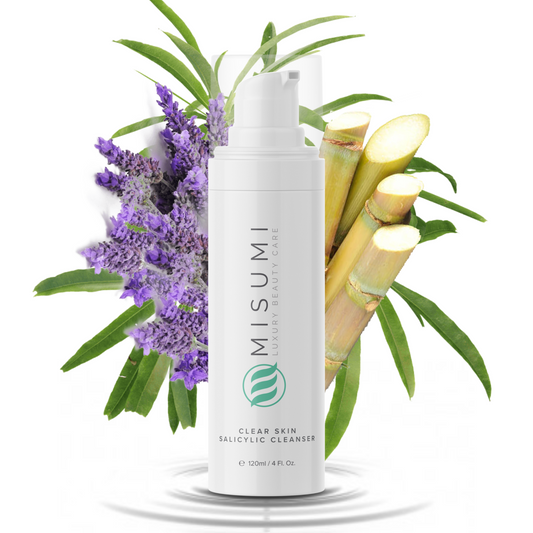Let me read your mind for a second. I believe your first thought after reading the title went something like “Let me read the big NO and see the studies that’ll put an end to this nonsense once and for all! Chocolate doesn’t cause acne, does it?! After all, how can something sooo good be so bad?” I assure you, I and almost everybody else shares your worry.
Chocolate is already a guilty pleasure to begin with - what with all the sugar and saturated fats that make us diabetic and overweight. But why does chocolate have to take the blame for our acne outbreaks as well? I mean, if chocolate is so unhealthy and bad for our skin, then why is its taste so addictive? In this article, you will find the answers to all these burning questions, so let’s start by examining the facts.
What Is Chocolate Made Of?

The origins of the chocolate date back to almost 1900 BC, which is when the first evidence of chocolate beverages was supposedly discovered.
The process of creating this wonderful deliciousness, which is made by grounding and roasting cocoa beans, begins with harvesting the cacao pods when they are ripe. After being collected, the pods are opened and their seeds are removed.
Next, the beans are cleaned and exposed to sunlight for about 2-9 days, which is a process known as fermentation. The fermented beans are then carefully dried under the hot sun, checked for quality, and exported straight to the chocolate maker. Once there, the beans are processed into cocoa powder and cocoa butter.
Different Types Of Chocolate

It’s quite important to understand the chocolate making process in order to realize why providing an answer to a simple question like “Does chocolate cause acne?” is so challenging. After all, different producers use different methods to prepare the cocoa beans, which results in diverse nutrient profile. Adding different ingredients in different quantities in the conching process makes things even more complicated. Let’s take a look at the three main types of chocolate, according to the National Confectioners Association, and their connection to acne breakouts.
Dark Chocolate
Made only with cocoa mass, cocoa butter, and sugar, dark chocolate is the most basic form of chocolate. That being said, most brands add extra cocoa butter, sugar, an emulsifier (often lecithin) and additional flavors to make it taste sweeter.
When it comes to acne, dark chocolate is your safest option, mostly due to it being a powerful source of antioxidants. If you choose the right brand, without much sugar added, your heart and brain can benefit from it as well. There’s even evidence that it protects the skin from the sun and helps our heart and brain health - just don’t forget to choose the ones with more than 70% of cocoa.

Milk Chocolate
Milk Chocolate is made from cocoa solids, cocoa butter, sugar, and milk powder. Because of the additional ingredients, milk chocolate has only a fifth of the cocoa content dark chocolate has, greatly reducing its health effects. What’s more, milk and white chocolate have more dairy, sugar, and other additives than dark chocolate overall, which explains why some studies have managed to find a link between chocolate and acne.
While there is evidence that eating milk chocolate can help your heart and brain health, when it comes to its effects on skin health, things get foggier. Going dairy-free is said to improve skin health and reduce acne outbreaks, but more research on the subject is needed before we can confirm this with 100% certainty.

White Chocolate
Did you know that technically white chocolate is not chocolate at all since it doesn’t contain cocoa solids? It’s made with cocoa butter, sugar, and milk powder (but no cocoa mass/liquor whatsoever). The key ingredient here is cocoa butter, making it high in saturated fats which is why when it comes to our overall health, white chocolate is a product you should say no to. In spite of that fact that it’s rich in many nutrients, it can’t make up for the high calorie, sugar and fat content.
Most studies and experts agree that white chocolate can have negative effects on our skin, so if you have sensitive skin and/or regular breakouts, it’s best to avoid it..
Studies on Chocolate And Acne Over The Years

Studies That Support The Theory That Chocolate Causes Acne
It seems that chocolate became a scapegoat for inflammations and breakouts somewhere in the 70s when a couple of researchers decided to test the idea that chocolate is harmful in instances of acne vulgaris. This poorly conducted study gave the chocolate a bad rep, and scientists from all around the world have been trying to clear the air and finally find out what really goes on ever since.
A 2013 study on lab cells suggests that chocolate increases the incidence and severity of acne by stimulating the immune system to react more aggressively to the acne-causing bacteria. This still needs to be confirmed in humans.
In 2014, a double-blind, placebo-controlled study found a positive correlation between chocolate consumption and an increase in the exacerbation of acne. It was a small, randomized and controlled trial on fourteen men aging from 18 to 35 years old. The skin condition was assessed on the first, fourth, and seventh day. The researchers found significant results were detected on both days.
To make things even more confusing, a 2015 study found that even dark chocolate has some effect on your acne condition. The study presents evidence that after four weeks of regular dark chocolate consumption, the patients' skin worsened.
Another study from 2017 examined the effects of chocolate consumption in college students suffering from acne vulgaris. The study found a statistically significant increase in acne lesions 48 hours after ingesting chocolate.
Studies That Reject The Theory That Chocolate Causes Acne

To look on the bright side, there are many studies that reject this idea that chocolate causes acne.
For example, a study from 2012 found no link between high consumption of milk, ice-cream, chocolate and acne lesions.
Another 2014 study took into consideration the type of chocolate consumed when examining the impact chocolate has on acne vulgaris. The study was designed as a case-control clinical trial, with 57 volunteers who were given 100 g of either white or dark chocolate daily for 30 consecutive days. It was found that white chocolate consumption is associated with exacerbation of acne lesions, while dark chocolate didn’t change the severity of the acne lesions at all.
Aftermath And Explanations

Although the scientific community is still going back and forth when it comes to the question “does chocolate cause acne?”, there’s been growing evidence in recent years showing that chocolate might be the culprit for more frequent and inflamed pimples. Unfortunately, this is the case for dark chocolate as well. So, why is this happening?
The first reason why chocolate might cause your acne breakouts is linked to the high sugar and high-fat content in both chocolates and chocolate derived products. A diet high in sugar and fat can increase sebum production, and increased sebum unfortunately usually leads to acne outbreaks.
Other studies suggest that cocoa alters the immune system by making it more aggressive when attacking the acne-causing bacteria. All this leads to more severely inflamed pimples, so keep it in mind.
Conclusion

It might seem that the relationship between chocolate and acne stays a historical enigma. I would love to give you the straightforward “NO” you might be looking for, but honesty is the best policy, right?
While the scientific community goes both ways on this matter, you can test this theory yourself and see how your skin reacts.
Avoid eating chocolate and chocolate-derived products for a couple of weeks, then slowly start introducing chocolate back in your diet. Keep a journal and be attentive to any changes regarding your pimples. If you notice that your acne condition gets worse after eating chocolate, the best advice we can give you is: stay away from chocolate delights. It won’t be easy, but if it helps you finally have clear skin, it’ll be totally worth it!








